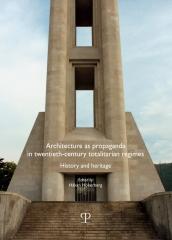It is well known that architecture has the potential to support and promote ideological propaganda. In the totalitarian regimes of twentieth-century Europe, political leaders clearly understood that potential and knew how to exploit it. As a consequence, architecture prospered under totalitarian rule. When the regimes eventually collapsed, they left a rich architectural legacy, which remains today as an evident and sometimes awkward part of the urban landscape. This conference volume explores how prominent architects conveyed the dominant political programmes of totalitarian regimes through buildings, monuments and urban planning. Scholars from a range of academic backgrounds examine the significance of difficult architectural heritage with regards to national identity and historical understanding - whether this heritage is acknowledged or ignored.
Examples illustrate different approaches to the management of ideologically controversial heritage, reflecting the varying ambitions of former totalitarian nations to confront their dark past.

(0 Comentarios)